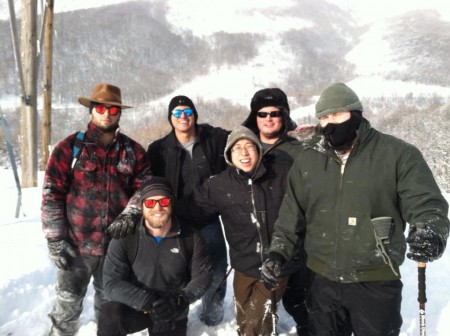Two years ago I wrote a post about Transitioning Into Olympic Weightlifting. If you have considered making the switch, it’s worth a read. @conorjmcclure asked how the program could be turned into a 3x/week program instead of the regular 4x/wk.
There are two ways to use the original template: 1) as a transition into weightlifting to allow joints and soft tissue to adapt to the explosive movements or 2) as a combination of explosive weightlifting movements with traditional strength movements. How I’d approach a 3x/wk would depend on the trainee’s intention, but usually people still want to get stronger while incorporating the Olympic lifts. Here’s how I’d do it:
Monday
Snatch (heavy)
Clean and Jerk (medium)
Squat
Wednesday
Press or Push-press
Front Squat
Barbell rows
Friday
Snatch (medium)
Clean and Jerk (heavy)
Squat or Bench
RDL
It’s not a perfect template, but I like the symmetry of snatching and CJ’ing on the first and third training days instead of bunching them on one side of the week. If the lifter was young (and therefore can recover well) or an intermediate squatter wanting to push it hard, they could squat on Friday. This weekly structure would work well with a traditional Texas Method set up, and depending on the lifter’s deficiency, they could focus more on the Olympic lifts or the squatting. Otherwise, I’d clean and jerk heavier near the end of the week, use that as some squatting work, and then get some benching in if the person was weak or still wanted to get bigger. I don’t usually knock bench completely out of a program unless someone is no-shit committed to weightlifting.
I always like to get quality RDLs in most programs since most trainees rarely develop their posterior chain properly and they can be a benefit in weightlifting. If someone wanted to, they could squat and bench and RDL, but that’s kind of a lot of shit going on. The benching could always be lighter or medium-ish and supersetted with RDLs for the sake of getting through it.
As far as the snatch and CJ, I’d approach it like I mentioned in the previous article. To summarize, you’d lift heavy in one of the lifts and then “medium” (or about 80% of the hypothetical max) with the other lift. Snatch is always done first since you’ll always CJ after a snatch in a meet. Monday would be heavy snatch, medium CJ. Friday would be medium snatch, heavy CJ. For the medium lift, accumulate 6 to 10 reps preferably on a clock (1 minute for snatch, 90 to 120 seconds for CJ). For the heavy lift, work up to heavy singles, meaning you can only do about five of them. Each week you’ll aim to increase the weight by 2.5 or 5k. When you can’t maintain 5 singles, just do about 3 and keep progressing. Eventually you’ll only be able to hit one heavy single and can’t repeat it. Keep pushing the weight each week with as small increments as you can. If you did this progression right, you should have about 2 or 3 months of work. If you have serious mechanical errors, then decrease the top load about 10% and work on your issue.
This is pretty much a beginner progression on the Olympic lifts that can last anywhere from two to four months. It’s simple and effective. Once you peter out on this progression, you’ll be ready for more complicated programming unless you just want to continue doing sub-maximal work on the Olympic lifts and max them every few weeks.
Ideally you’d want a coach before starting so you don’t ingrain bad habits or movement patterns, but once you complete this progression you definitely need to seek out a coach. If you spend a couple months working on something, it means you’re dedicated enough to spend a little money and improve on whatever you accomplished solo.
I wouldn’t add much more to this other than pull-ups or chin-ups sprinkled in on any day. Of course, muscle imbalances should be corrected when necessary, but most people throw too much shit into a training program, clutter it up, and they miss out on raw performance gain that the basic barbell lifts provide.

